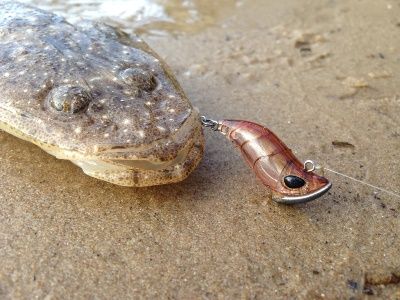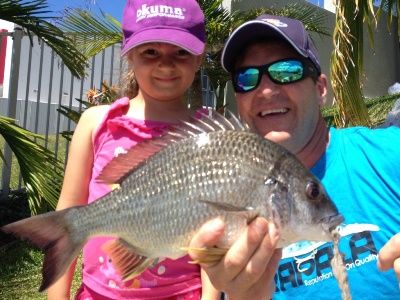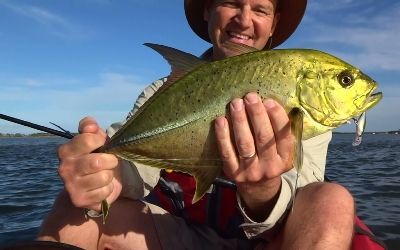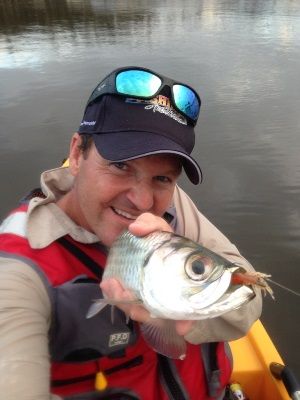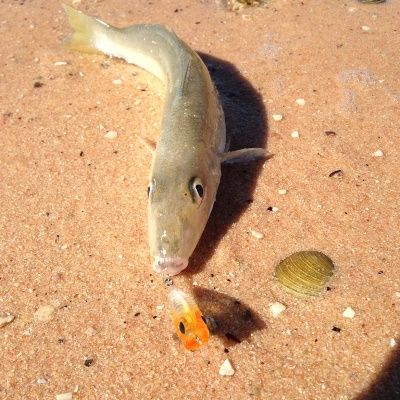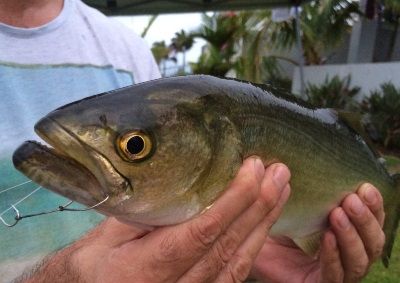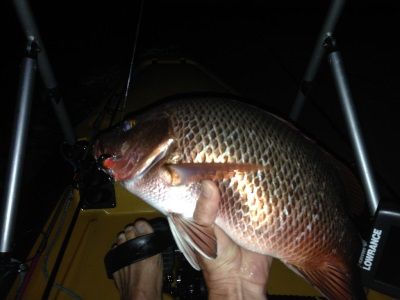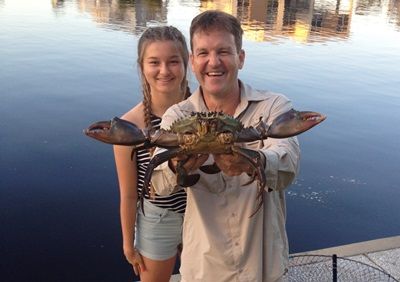Latest News
12 months living on Pelican Waters
Monday, 2 February 2015
It’s been around a year now that we’ve been living right on the water at my new base in Pelican Waters on Queensland’s Sunshine Coast.
It was long term dream of my families to move here: in all my travels hosting the Fishing Australia TV series I couldn’t find a place with better climate, water temperatures and water ways that also has the great schools, universities and other things a family need.
We saved hard to get here and it’s now paying off on so many personal and professional fronts. In the case of this article the fact we’re learning new things and reinforcing much about what we understand about our fishy friends means I can now deliver yet more to my writing and TV audience.
I live above the loch in the brackish reaches and thanks to having an office perched above the water I’ve even seen some incredible things, even whilst having a break for breakfast!
Take for example watching huge masses of bream move onto the flats about two hours after the sun rises. It’s a non-tidal area so I would’ve thought right on dawn or at dusk would be better, but I think in this instance they are moving in to munch the worms and crustaceans just as the water warms up and things start to wriggle. They sometimes move in first and then feed later when the prey appears. It’s a wonderful sight.
The mullet then move in behind the bream to sift through the stirred up mud. The lesson for new comers is that if you see stirred up water, fish are there, and more importantly they are feeding, and while early and late in the day are often best, keep your polarized fishing sunnies on and keep your eyes peeled at all times or you’ll miss a lot of these handy clues.
Note that I fish around the system as much as I do in my own back yard so I’ve combined the most important parts of what I’ve seen at both to help you make the most of the place and also give you an insight into a wonderfully rich and diverse fishery.
BREAM: As I’ve already hinted this place is bream city, there are untold thousands of them throughout the system. They are extremely easy to catch on bait; one good technique is fish where neighbours feed the bream and use an unweighted bread ball for bait. You’ll make handy fishing friends quickly around here...angling the most popular recreation in S/E Queensland (by Government Survey)...but if you are brand new too or visiting the area there is loads of spots with public access to the water, even water front Gazebos...it’s like a high end video game course made for fishing!
Another great technique is too to pop a striped tuna strip the size of your thumb on a 2/0 circle hook on a running sinker. Use no more than 3kg line for best results. Besides bream this also works on other fish; I’ve caught some 30 different species to date!
Check the bait every couple of minutes, or after nibbles: the place is nursery loaded with squillions of tiddlers that steal your bait once they cotton on to the scent in the water.
Speaking of tiddlers, while waiting for a bigger fish on the tuna bait, use a tiny unweighted size 8 hook in a burley trail. This is a great approach if you need to need to keep the kids occupied. Bread is a good cheap bait and burley ...and the kids don’t get messy. Keep some sealed so it stays fresh and moist, otherwise it gets too dry and crumbly to stay on the hook.
If you want to up the ante, fishing for bream on lure and fly is a fantastic high end challenge that’s very popular with more advanced anglers. There’s plenty of land based spots, but a Kayak is the go...you can have a handful of casts at each jetty or point and then quietly move to the next one easily covering lots of spots in double quick time.
Tiny 3 cm long poppers are good, and little 2 to 4 cm long deep diving minnows are good too, especially those with a tight action. Vibes and plastics also work well. Fly is by far the most effective of all though, and I expect to see a few more people getting into this now that plenty of people have seen me pull some big bream from under their noses. Around a size 4 bead head nymph on a long 4 pound tippet is THE GO. If you’re just getting into fly remember, learning to cast comes first...fishing come later.
One big tip with Kayak Fishing, it’s very hard if not impossible to hold or move a kayak with a paddle and hold your rod at the same time. Save up for a Hobie with the foot propelled Mirage Drive…it’s angling bliss! Moving on and it’s worth mentioning the bait and non-target species in the system, after all they all help the eco system tick. More common bait species include butter bream, herring, poddy mullet, hardy heads, silver biddy, shrimp, butter prawns and snub nosed gars. They mainly move in en mass via big warm springtime tides that surge over the loch, and then slowly thin out by the time winter comes.
Spotted rays, long tom and giant mullet are also a common sight. Less seen but still about are long tom and blue swimmer crabs, and on the rare occasion I’ve even seen squid!
TREVALLY: Back to the fish you want on the end of your rod, and while not nearly as common as the bream, trevally are great fun to catch. Various species such as big eye, golden and tea tree trevaly inhabit the system but they are ‘where you find them’. You’ll either cross paths with them as they lap the area, or on occasion you’ll find them smashing up bait schools.
The trevally typically range in size from 30 cm up to at least 60cm, but like all ‘trevs’ they fight hard at any size and will give the bream gear a real work out. Use similar techniques as per bream, but if you see bait or bird activity move there quick and cast in a small lure or fly.
TARPON: These are another cool option, and you’ll catch them from below the loch in tidal reaches right up into the freshwater creeks above the loch, and even in the golf course lakes! They love small baits eg nippers or prawns on a lightly weighted size 6 hook, and lures work great too, but again fly is best of all.
The best time to target tarpon is after heavy rain when they move towards inflow points, such as the weirs. A day or two after a significant rain event will see a few anglers casting lures and flies where the water is flowing on occasion it’s a ‘poon per cast’ !. They are not always easy to find outside these times, but whenever you catch a tarpon you won’t forget it, they are only 30 to 50 cm long but can jump 5 foot clear of the water - LOVE EM!
One note, while the inflow points can fire just after a rain, they sometimes go very quite a few days later. This is because if the salinity drops the saltwater species will head for the bottom of the deep holes where it may still be salty (freshwater is lighter and hence sits on top of saltwater unless big waves and currents mix it).
Also tannin nutrient rich water from the flooded forest creeks may have slightly less oxgen at those times, in which case fish in the lock head away downstream or down deep where they get the oxygen they need. This is a completely natural process that replaces nutrients and creates a dynamic ecosystem. Main point for anglers is that fish move, so if you’re not getting bites or seeing them with your Polaroid’s/sounder they may well be just around the corner.
FLATHEAD: Above the loch I’ve only seen one big 80 cm job travel past while I was gardening one weekend, and a few friends have caught the odd one. Below the loch there are a few including some world beaters above the meter long mark. However if you really want flattys in numbers head to the passage and paddle across to the lagoons in the flats. All standard flatty techniques work, but shallow running hard bodies worked swiftly in water between 0.3 and 1.5 meters deep will see you catch your bag limit in double quick time...and keep your family happy with a great feed at the same time. All year round is good, but spring time is the best.
WHITING? I had one big lone 50cm pet one move in to my back yard for a few weeks over spring, but below the loch and especially in the passage is the go. In fact the passage is whiting city and many locals head out there after work to get their bag of this very sweet tasting fish. Locally pumped Nippers on a running sinker rig is the usual technique, but personally I like catching whiting on tiny poppers-great sport.
TAILOR: are also very common in the system, the cooler months of year are best and like tailor everywhere else they respond well to rich oily burley and baits eg tuna and pilchard. Small lures also work well, but a short bit of 3 pound trace will stop them thinning out your lure collection with their razor sharp teeth. Average size is 30 to 45 cm with some 90 cm plus cm ‘stonkers’ in the mix.
JACKS: While there’s a few barra in the system the biggest trophy of all is the mighty mangrove jack... These revered fighters average 35 to 50 cm, with the best one we’ve seen measuring a whopping 65cm: a world class jack in any ones books! There are however much bigger ones again, we’ve seen them, but no angler has stopped one yet-they dust you up before you can blink! More detail on Jacks in an up coming piece... I simply love targeting them out of my yak when the working day is done.
There are many more types of fish and ways to catch them, there’s even a big hole in the system that’s 11 meters deep where many species hide over winter or after a big fresh, and they have some company in the form of big estuary cod, jewfish and others I have yet to catch.
Then of course there is the nearby bass and Saratoga rivers and lakes, plus the brilliant beach, reef and rock fishing...I’ll pen down what I know when I get a chance, but even for me who fishes for a living there’s plenty more to see and catch and that my friends is a truly enjoyable thing to look forward too.
See you on the water.
Rob Paxevanos

